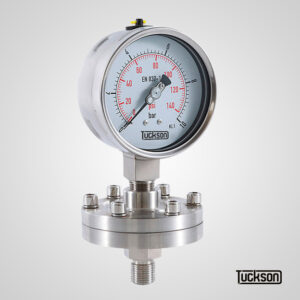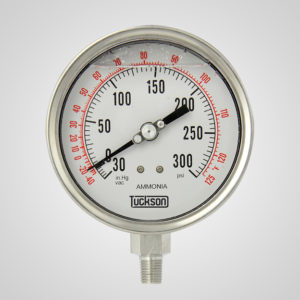Description
Differential Pressure Gauge
Applications
Differential Pressure Gauge has two bourdon tubes, it measures two different pressures and it indicates the differential pressure. They are used in heating systems (supply and return lines) and filter systems.
Standard Features
Sizes
4″ (100 mm)
Accuracy
1.6% of full scale
Case material
304 Stainless Steel matte finished
Bayonet bezel
304 Stainless Steel
Window
Polycarbonate or safety glass
Bourdon tube / movement / socket
Brass or 316 Stainless Steel
Operating Temperature
Ambient: -20 to 65°C (-4°F to 149°F)
Process fluid
max 65°C (149°F)
Dial
Aluminum with black & red markings
Pointer
Black aluminum
Connection
1/4″, 1/2″ NPT or BSP, lower
Ranges
0 to 1500psi/Bar
Working pressure
Static load: 100% of full scale
Dinamic load: 90% of full scale
Overload: full scale value
Protection Degree
IP65
Dry
Installation tips
Pressure gauges mounted directly on piping should be assembled with reasonable care, always using the wrench grip provided on the pressure connection to secure it to the threaded fitting.
Do not use the gauge case as a means of tightening the connection.
In order to extend the service life and continued accuracy, the gauge should be protected as far as possible from effects of mechanical vibration. It is desirable to isolate it from severely vibrating machinery.
The gauge may be rigidly mounted to a non-vibrating surface and connected to the pressure source using flexible tubing.
Tip: we recommend the use of Needle Valves
Follow us on Pinterest





